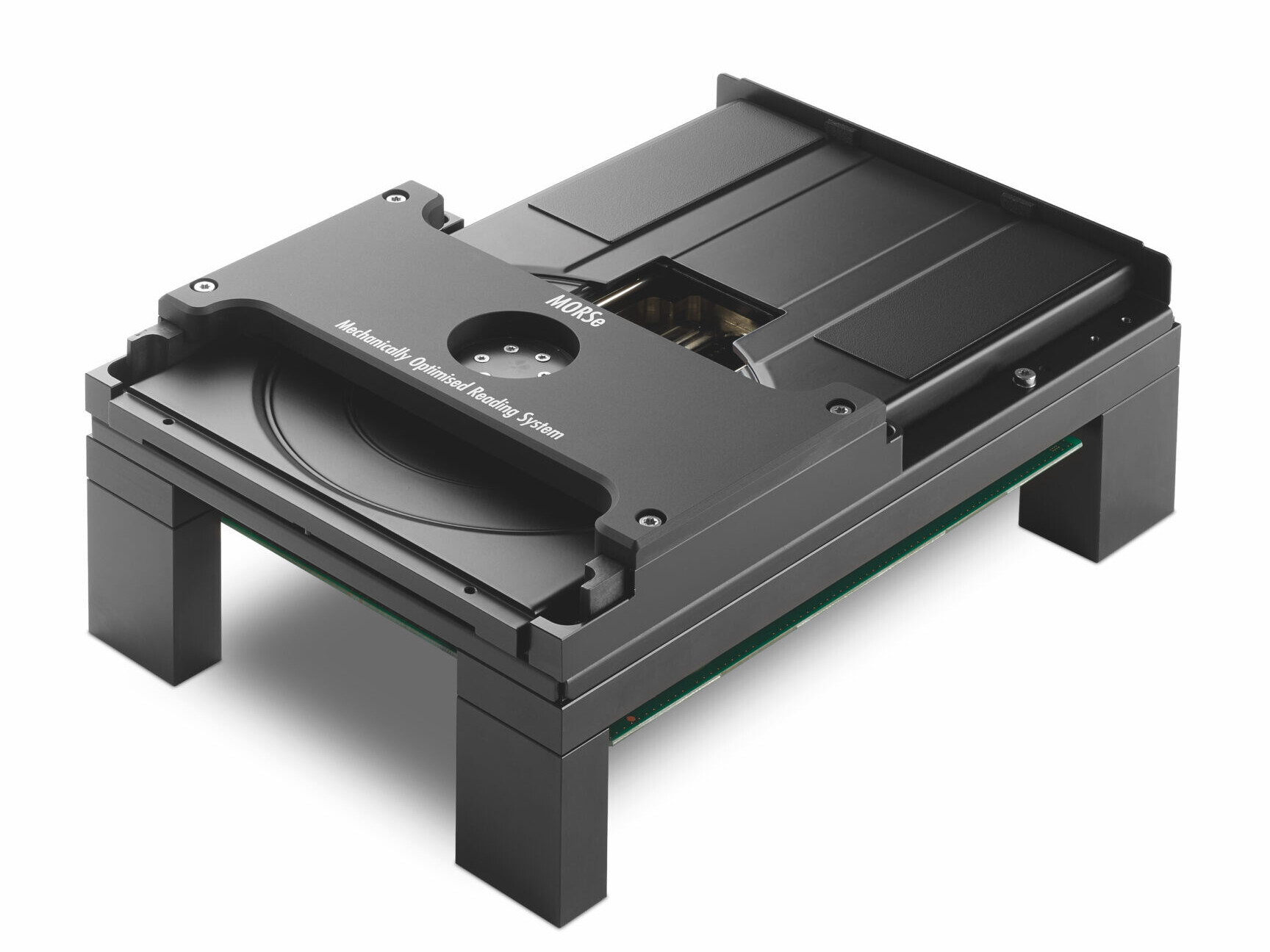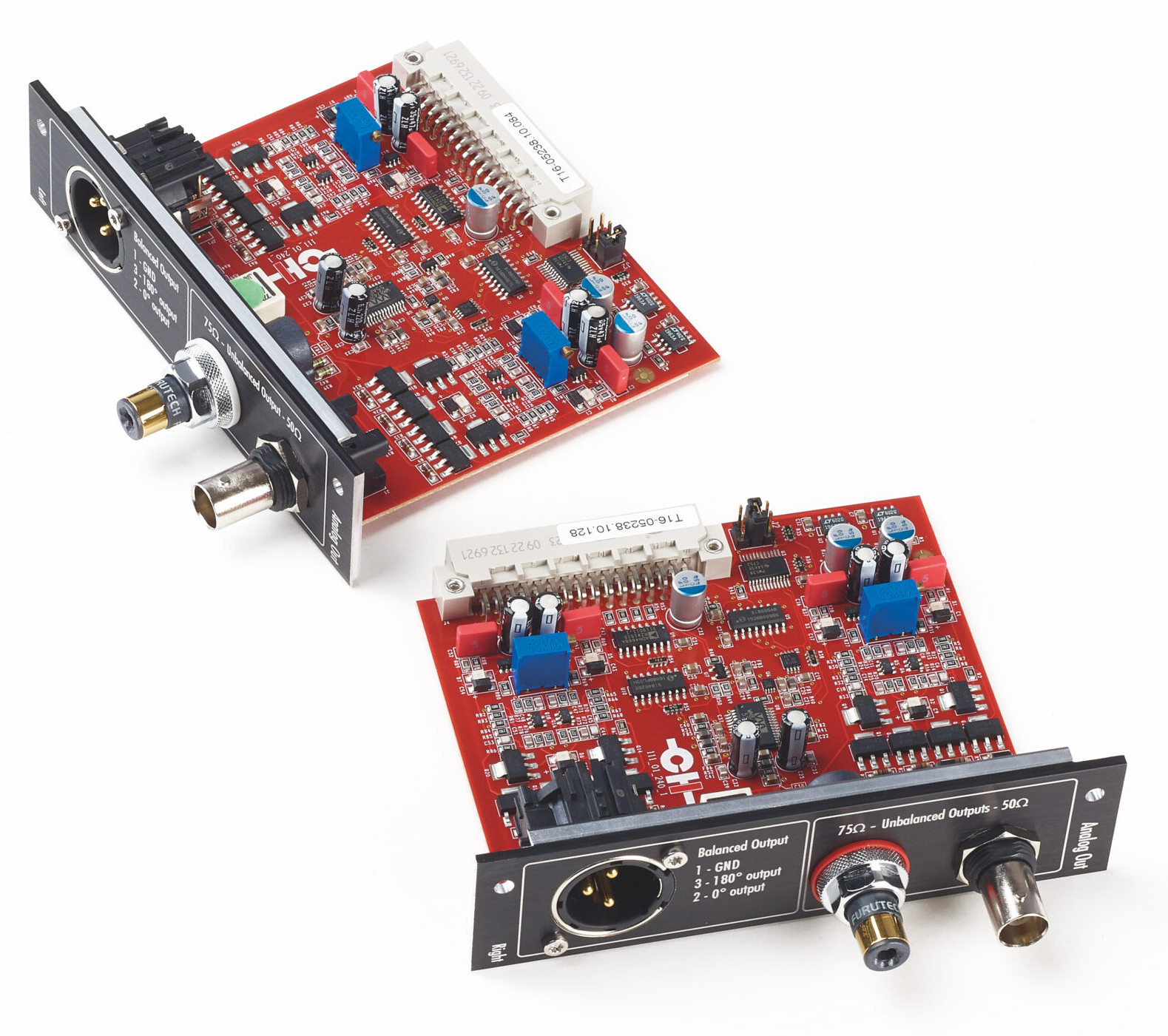The first and most obvious of these is the transport. The withdrawal of the VMK-5 left CH (and a host of other companies) looking for a replacement transport. With candidates thin on the ground, the best (if not the easiest) solution was to design and engineer their own. Starting from the basis of the top-flight Denon/Marantz CD/SACD unit, CH extract the spindle motor and laser head. The entire chassis is discarded. The donor elements are then precisely mounted into a precision-machined brass sled and swing-arm assembly. Weighing in at just short of a kilo, this lowers the resonant frequency of the reading platform significantly. In turn, that is mounted on an Alphagel suspension, critically tuned to protect the reading platform from structural and internally generated, mechanical noise, mainly emanating from the power supply. The whole sub-assembly is in turn mounted on a massive and incredibly rigid aluminium alloy frame that couples it securely to the mechanical ground-plane provided by the chassis base-plate and corner-mounted ground spikes. The whole lump – dubbed MORSe (Mechanically Optimised Reading System) – weighs in at a seriously significant 3kgs and is controlled by proprietary operational software.
 The new transport places the disc drawer at a different height, which together with the revised dimensions and mounting arrangements for the MORSe mechanism itself, means that it cannot be retrofitted into an existing D1 chassis. Wherever possible, CH Precision try to make all series improvements retro-fittable. Hence the M1.1 update to the M1 power amp, a kit of new parts that could be field installed into existing units, bringing them up to full, current specification. But sometimes that just isn’t possible. So when the A1.5 replaced the A1, the requirement for a larger chassis made the physical upgrade of older units impossible. CH responded to the situation by offering A1 owners a substantial trade-in against a new A1.5. The same situation applies to the D1 and D1.5, and CH is offering the same solution. Hence the .5 designation, as opposed to .1 or .2 etc, which refer to interim steps applicable to existing hardware. The D1.5 costs $41,000 in basic form. Owners of the original D1 can make the step up for $24,600 by trading in their existing unit, which is a pretty impressive return on a digital component that might be anything up to 12 years old. What’s more, their existing option cards (internal DAC boards or SYNC-IO, with a combined purchase price of $6,500) and the HD-Link cable if they are using it, can be swapped into the new unit, further protecting their original investment.
The new transport places the disc drawer at a different height, which together with the revised dimensions and mounting arrangements for the MORSe mechanism itself, means that it cannot be retrofitted into an existing D1 chassis. Wherever possible, CH Precision try to make all series improvements retro-fittable. Hence the M1.1 update to the M1 power amp, a kit of new parts that could be field installed into existing units, bringing them up to full, current specification. But sometimes that just isn’t possible. So when the A1.5 replaced the A1, the requirement for a larger chassis made the physical upgrade of older units impossible. CH responded to the situation by offering A1 owners a substantial trade-in against a new A1.5. The same situation applies to the D1 and D1.5, and CH is offering the same solution. Hence the .5 designation, as opposed to .1 or .2 etc, which refer to interim steps applicable to existing hardware. The D1.5 costs $41,000 in basic form. Owners of the original D1 can make the step up for $24,600 by trading in their existing unit, which is a pretty impressive return on a digital component that might be anything up to 12 years old. What’s more, their existing option cards (internal DAC boards or SYNC-IO, with a combined purchase price of $6,500) and the HD-Link cable if they are using it, can be swapped into the new unit, further protecting their original investment.

The on-going compatibility of the various option boards suggests that the D1.5 retains much of the overall topology and physical hardware/card-cage chassis arrangements of the D1 and that is indeed the case. However, there are still a number of significant changes on the processing and output options side. The first is a massive, four-fold increase in on-board signal processing power, a capacity that allows the D1.5 to incorporate the latest iteration of the PEtER Spline filter algorithm, improving analogue output quality dramatically. I know reviewers get a bad-rep for over-stating the magnitude of differences, but if you’ve heard a D1/D1.5 player comparison, you’ll appreciate that the difference is dramatic indeed, elevating the player’s one-box performance from ‘also ran’ to ‘serious contender’. That processing power also allows the D1.5 to offer full MQA disc replay capability – which you can read about in detail here https://gy8.eu/blog/is-mqa-a-new-dawn-for-cd-replay/

